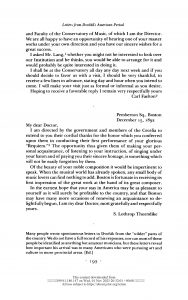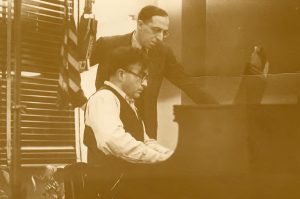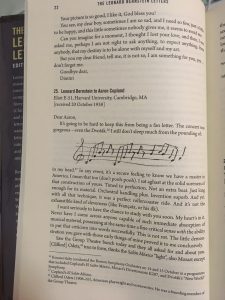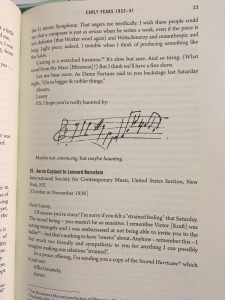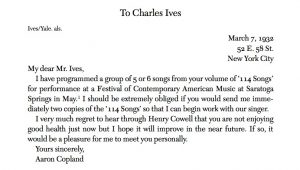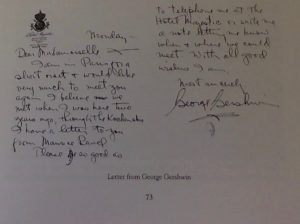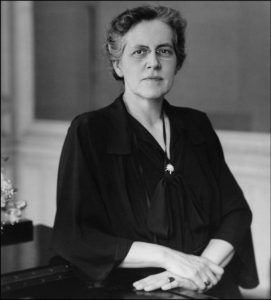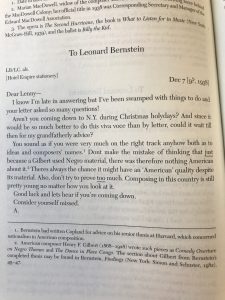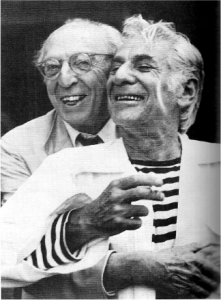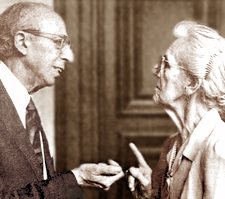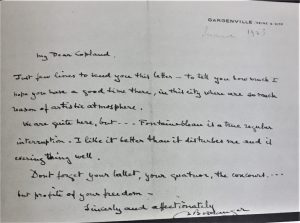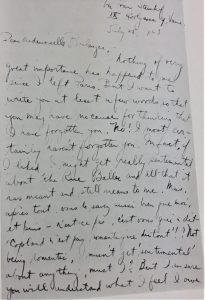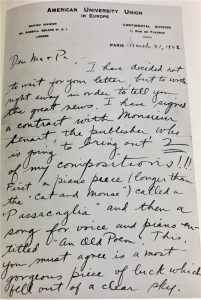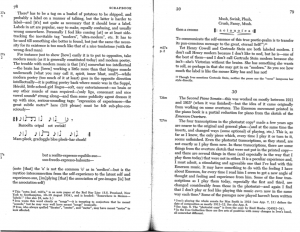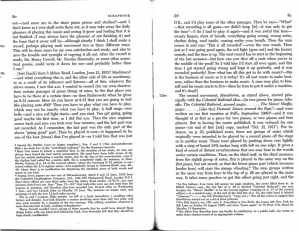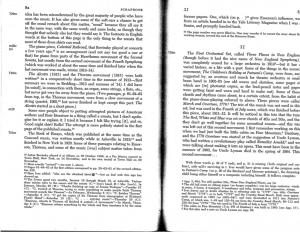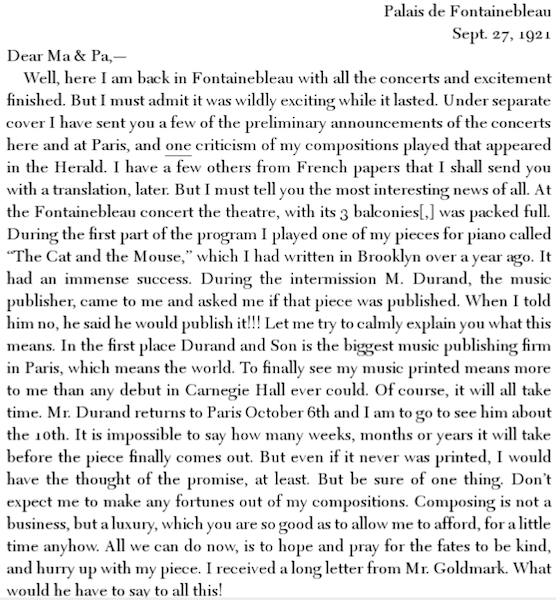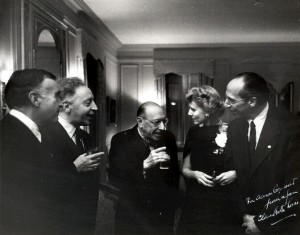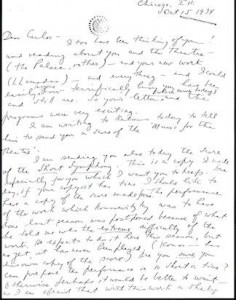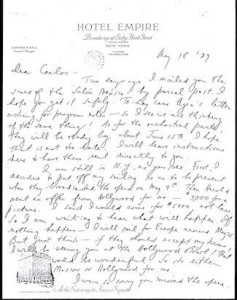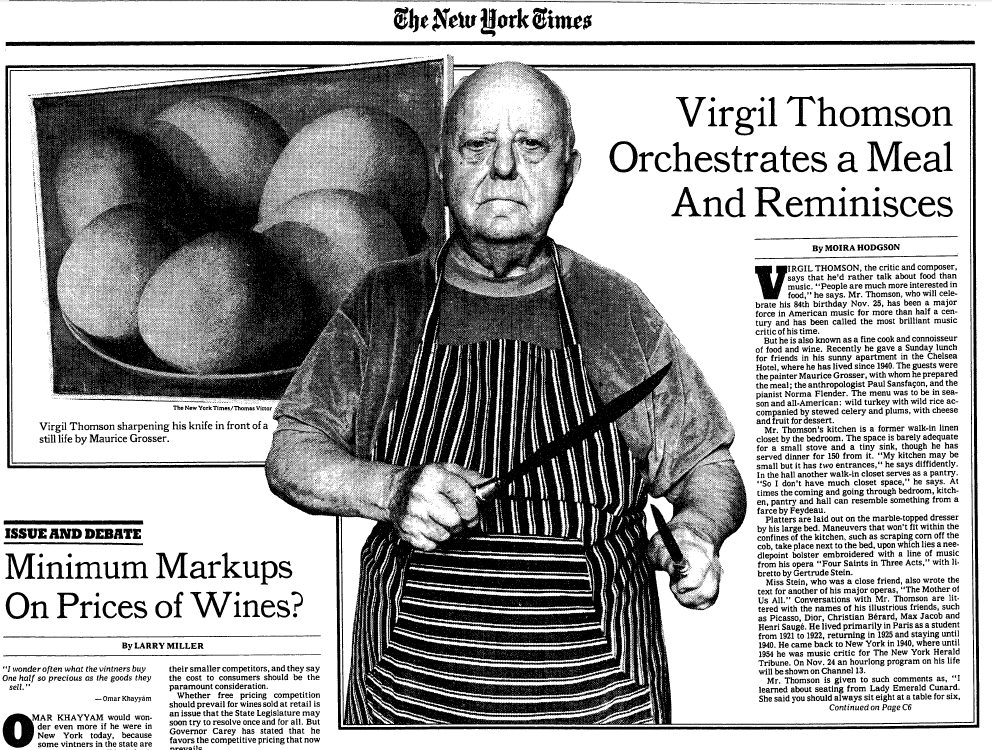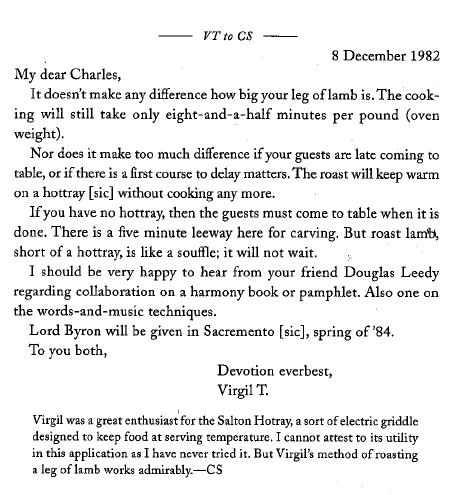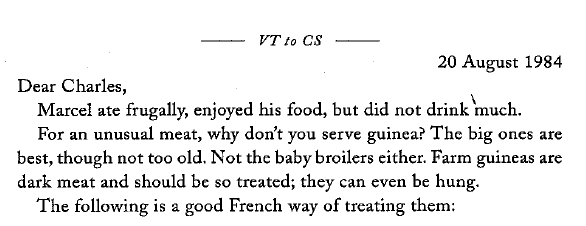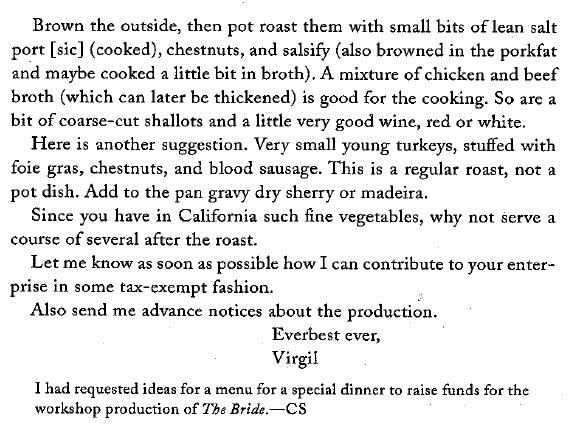William Grant Still is widely recognized as the first African American composer to conduct a professional symphony orchestra in the United States, and for his work Symphony No. 1, “Afro-American” (1930)1. As we’ve discussed in this course, understanding musicians’ journeys often involves tracing back through their experiences and influences to see what shaped them musically. I was first introduced to Still’s work in high school through Danzas de Panama, which sparked an interest that led me into the archives. There, I discovered the correspondence between Still and music critic/pianist Irving Schwerke, offering a glimpse into his planning and creative process2.
Below is a letter from Still to Schwerke, written in 19313.
Just a few months before this letter, Still had written to Schwerké with specific requests for an upcoming performance of Africa, detailing instructions like executing fingernail pizzicato on the piano and using certain mutes for the brass instruments. Their correspondence went back and forth, especially concerning the availability of these particular mutes. While these details may seem minor, they are crucial in recognizing how rare it was at that time for composers of color to receive such performance opportunities.
https://www.youtube.com/watch?v=WAZByrG1dE0
In exploring more about Still’s exchanges with Schwerké, I came across a class blog post from 2019 by Siri Mellem, which highlights how composers’ statements and experiences, particularly looking at those of Still, are often complex and layered4. As the first African American composer to have works performed, an opera produced by a major American company, and even televised, Still’s achievements as a person of color were highly significant. I could see what Mellem meant by complex when reading the letter above, and reading: “I agree with you as to the origin of American Music. As I see it, the music of the American Negro has resulted from the union of the religious songs you mentioned and the primitive songs of Africa.” The idea of the melting pot is present here, though it makes me wonder how much thought Still must have put to the idea of American music and how his identity as one of the first prominent conductors of color may have influenced this view.
I was also reminded of the challenges Still faced as an artist of color while working with large networks and companies. For instance, when Deep River moved to NBC, he was not allowed to conduct because network policy prohibited Black conductors from leading predominantly white orchestras. However, when the program eventually moved to CBS, Still was given the opportunity to conduct. He later recalled, “There were many surprised faces as I mounted the podium, but at the end of the rehearsal, we were friends5.” This experience illustrates both the barriers he encountered and his skillful navigation of them.
This aspect of Still’s approach to his career, his careful wording and strategic positioning, seems similar to the approach of Eileen Southern, who also balanced careful self-presentation to fit within the established system. Both exemplify how artists of color have historically had to make thoughtful choices in how they communicate and operate within predominantly white institutions to have their voices heard and their contributions recognized.
1 Thomas, Mike. “Decades after his death, William Grant Still receives his moment in the sun,” Chicago Symphony Orchestra, Jan 4, 2019, https://cso.org/experience/article/2899/decades-after-his-death-william-grant-still-r#:~:text=Still%2C%20the%20first%20African%20American,in%20late%2018th%2Dcentury%20Haiti.
2 Mellem, Siri. “The Complex Contradictions of William Grant Still.” Music 345: Race, Identity, and Representation in American Music (blog). WordPress. Oct 24, 2019. https://pages.stolaf.edu/americanmusic/2019/10/24/the-complex-contradictions-of-william-grant-still/
3 Still, William Grant. Letter to Irving Schwerké. “The Bad Homburg Festival of American Music ,” July 29, 1931. https://publishing.cdlib.org/ucpressebooks/view?docId=ft1h4nb0g0&chunk.id=d0e8217&toc.depth=1&toc.id=d0e7410&brand=ucpress.
4 William Grant Still and Judith Anne Still, My Life, My Words: The Autobiography of William Grant Still, American Master Composer (Flagstaff, AZ: The Master-Player Library, 2011).
5 William Grant Still and Judith Anne Still, My Life, My Words: The Autobiography of William Grant Still, American Master Composer (Flagstaff, AZ: The Master-Player Library, 2011), 213.


